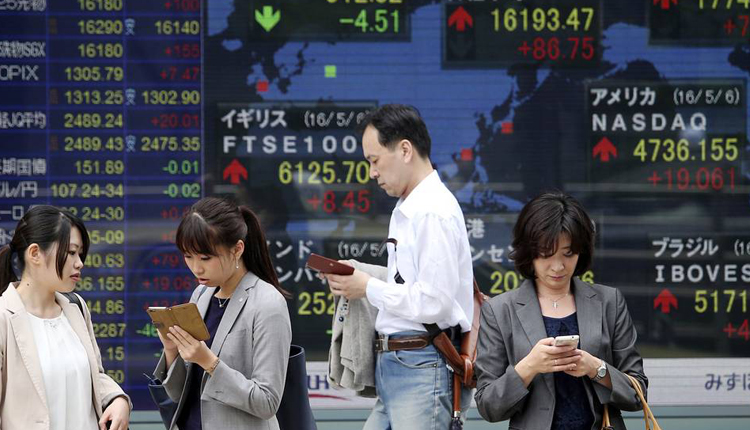Asian stocks climbed on Monday afternoon following data released over the weekend that showed economic activity in China unexpectedly bouncing back in March.
Mainland Chinese shares were the largest gainers as they jumped by the morning session’s end. The Shanghai composite was up 2.29 percent, while the Shenzhen component surged 3.13 percent. The Shenzhen composite jumped 3.027 percent. Over in Hong Kong, the Hang Seng index was up 1.65 percent.
Both the private Caixin/Markit Manufacturing Purchasing Managers’ Index and the official Purchasing Managers’ Index (PMI) expanded unexpectedly in March, surprising analysts.
MSCI’s broadest index of Asia-Pacific shares outside Japan added 1 percent, as of 12:22 p.m. HK/SIN
The Nikkei 225 in Japan jumped 1.55 percent in afternoon trade as shares of index heavyweights Fast Retailing, Softbank Group and Fanuc all advanced. The Topix index also gained 1.64 percent.
Apple supplier Japan Display saw its stock surge more than 11 percent after the embattled company said it aimed to reach a financing agreement this week that would lead to a 60 to 80 billion yen (approx. $540 to $720 million) stock and bond issuance.
Previous reports in January had suggested that Japan Display — suffering the impact of disappointing sales for Apple’s iPhone XR — was in advanced talks with an investor group from Taiwan and China to bail out the company.
The closely watched “tankan” survey by the Bank of Japan, released on Monday, had shown worsening business confidence among the country’s big manufacturers in the first quarter.
“The large manufacturing weakness is probably worrying for (the Bank of Japan) … in the sense that the economy isn’t picking up as quickly as perhaps as had been anticipated but the bigger issue … is not the economy,” Mitul Kotecha, senior emerging markets strategist at TD Securities, told CNBC’s “Squawk Box” on Monday.
Instead, Kotecha said inflation continues to be a bugbear for the Japanese central bank, where its target rate of 2 percent remains ever elusive.
Over in South Korea, the Kospi added 1.27 percent as chipmaker SK Hynix saw its stock jump more than 3 percent.
Meanwhile, Australia’s ASX 200 rose 0.56 percent, with majority of the sectors seeing gains.
China’s economy bounces back in March
Manufacturing activity in China expanded unexpectedly in March after shrinking for three straight months, a private survey showed on Monday. The Caixin/Markit Manufacturing Purchasing Managers’ Index (PMI) came in at 50.8 for March.
The official Purchasing Managers’ Index (PMI), too, rose to 50.5 in March from February’s three-year low of 49.2, marking the first expansion in four months, according to data released by the National Bureau of Statistics (NBS) on Sunday. The 50-mark separates growth from contraction on a monthly basis.
“This is the first month in four that Chinese manufacturing activity has returned to growth and suggests a read through of Chinese macro policy growth support beginning to flow through into the economy,” David de Garis, a director and senior economist at the National Australia Bank, said in a morning note.
“Looking ahead, there is now a decent chance that growth in China may bottom out slightly earlier than we had previously anticipated. That said, we still think growth could weaken again in the near-term,” Capital Economics said in a note.
On the U.S.-China trade front, high-level trade negotiations between the two economic powerhouses are set to resume in Washington this week following last week’s talks in Beijing.
Currencies and oil
The U.S. dollar index, which tracks the greenback against a basket of its peers, was at 97.185 after touching lows below 96.6 last week.
The Japanese yen traded at 111.03 against the dollar after seeing highs below 110.0 in the previous week. The Australian dollar — which tracks China’s economic prospects with the latter being its largest trading partner — rose 0.34 percent to $0.7119 in the morning.
Oil prices gained in the afternoon, with the international benchmark Brent crude futures contract rising 0.78 percent to $68.11 per barrel and U.S. crude futures adding 0.58 percent to $60.49 per barrel.
Source: CNBC


